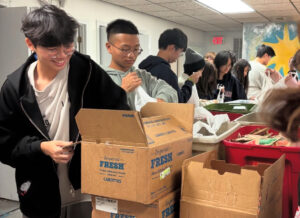Among the fourth week of remote learning, students have made major adaptations to the normal circumstances of a six to seven-hour school day. This new implement now includes online learning with a slight shift of class time and a new targeted learning day on Wednesdays. Furthermore, some teachers are using Google Meets and requiring students to meet face to face using online video calls. There are a multitude of opinions on this new form of learning; some have found it to be enjoyable and less stressful while others have become frustrated and bored.
A large obstacle to remote learning is the inefficiency of contacting teachers to ask questions. Although some teachers go above and beyond to schedule times for extra help and office hours, students can still find it difficult to approach their teachers online compared to in person. One sophomore explains that although online learning is “nice to be able to spend time with my family, it is also harder to communicate with teachers if I need help with something”. Other students agree that they are “missing the everyday connections that [they] usually have with peers and teachers”. In addition to how reaching teachers may be more difficult, the majority of instructors outline goals and assignments for each class period, providing students with organization and structure. Another fellow classmate comments upon how “the teachers have done a great job in clearly stating the directions to each class and answering questions”.
Looking past challenges, some peers have stated how online learning is “much easier” and work is usually finished in a “short amount of time”, laying off some of the extra stress students normally carry during the school year. Additionally, one peer states that this extra time “is teaching me to manage my time”, and learn to stay productive without a tentative schedule. Furthermore, a general consensus is that “Bedford’s transition into remote learning has been extremely smooth”.
Amidst this uncertain period of time, it is crucial to recognize the opportunity that our school district is presented in comparison to other less fortunate areas. One senior states how “we should be grateful for having the privilege and ability to move into remote learning so quickly because there are several other regions around the world where remote learning is simply unfeasible”. With the first time experiencing an international pandemic, everyone is trying their hardest to adapt to the circumstances they are given, including the school district. Although remote learning does lack face-to-face communication and the familiarity of a classroom, it is essential to remain positive and realize the growth and opportunity our school district provides its students.






